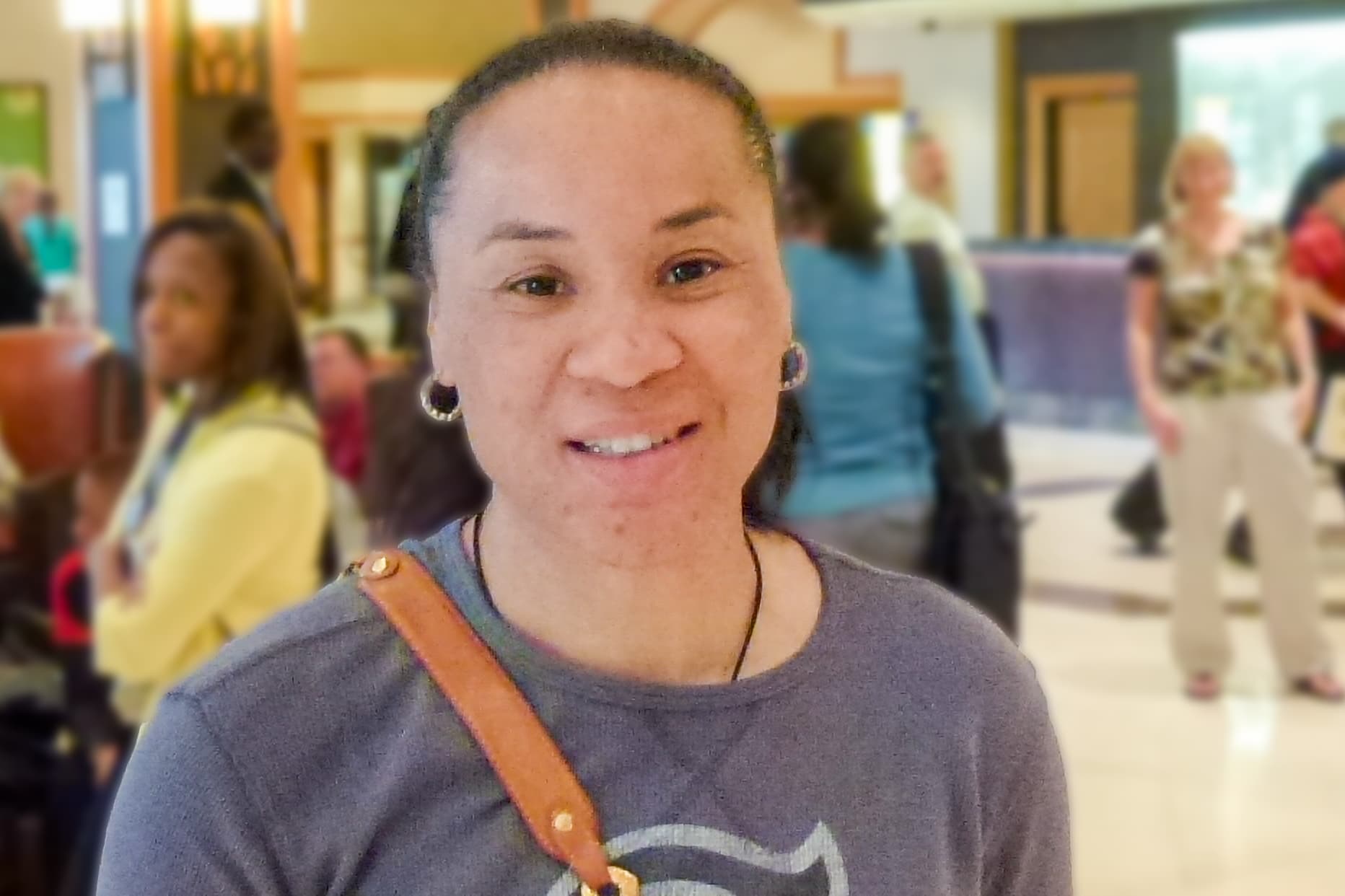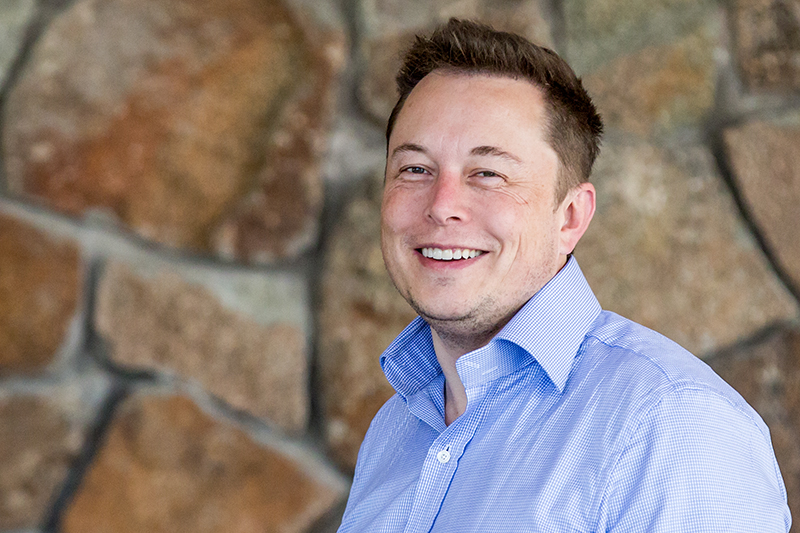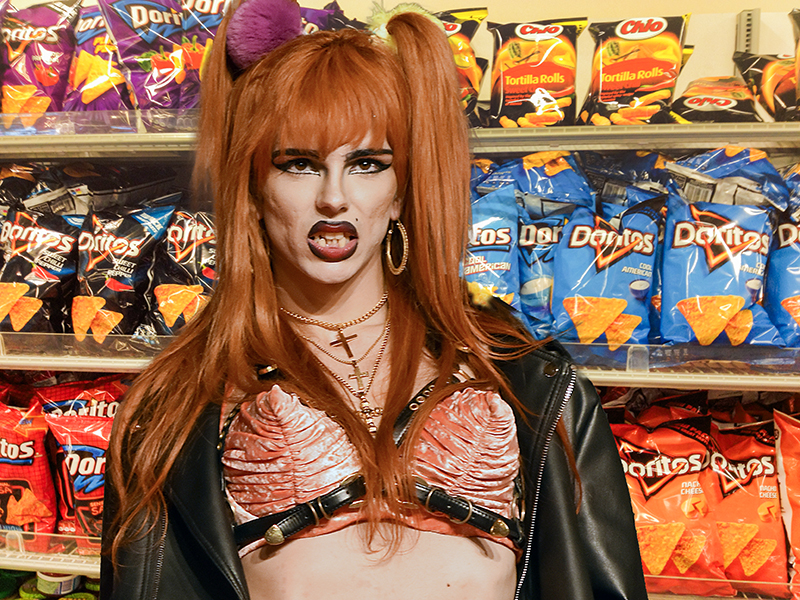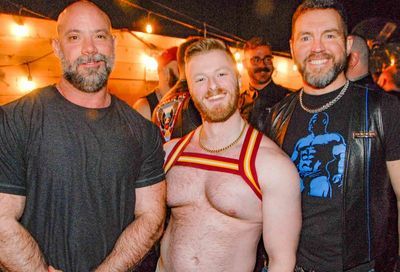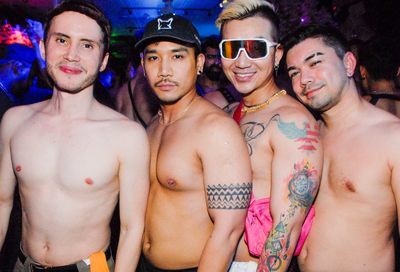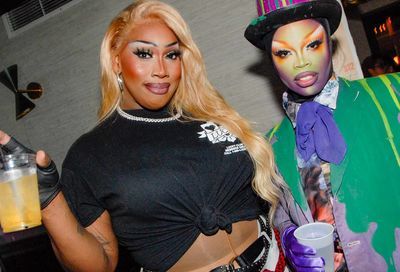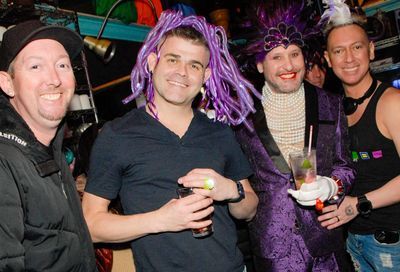Total Embodiment: An interview with Aydian Dowling
Bodybuilding helped Aydian Dowling embrace his identity as a transgender male

As a child, Aydian Dowling rarely ascribed to gender norms. It continued well into his teenage years, to the consternation of his mother.
“When I was young,” says the transgender activist and YouTube video blogger, “I used to fight my mother to the death when she wanted to dress me up for church and Christmas, and put me in these little dresses and hats and gloves and bags, because I was her only girl.”
During adolescence, Dowling initially identified as a lesbian. But even after “coming out,” he still felt as though he had not found his niche within the LGBT community. After some soul searching (and Internet surfing), Dowling realized he felt a strong connection to those who identified as transgender.
“Not only did I feel like I match with the physical,” he says, “but the emotional things they were talking about, the feelings of not feeling good in your body. And not just because you want to lose five pounds or you want blond hair and you have brown hair, but actually just disassociating from the body that you’re in, and feeling like you’re stuck in it. Feeling like there’s another person in your brain, but this is the body you have.”
That’s not to say there weren’t setbacks when it came to his transition. Regular courses of intramuscular testosterone shots became a necessary evil for the needle-phobic Dowling to move forward. For a three-year period, he struggled with the problem of identifying and being viewed as a male while not yet having had top surgery. His fears of how he’d be perceived by others were so intense, he avoided going to the beach or swimming, activities he normally enjoyed. His actions were made starker by the fact that he was living in South Florida at the time.
“When I was having a really tough day, I’d take a shower with the lights off, in the dark, because it did too much to me mentally to look at my body and not feel like it matched me. It was just too hard,” he says. “It was easier to take a shower in the dark, ignore the mirror, take five minutes, get dressed and be done.”
As his transition progressed, Dowling became enamoured with bodybuilding. Although his first foray was prompted by a desire to look more masculine, the success he enjoyed in taking control of his own health and fitness helped Dowling develop a greater sense of confidence. It was that same sense of self-assuredness that prompted Dowling to launch his own clothing company, Point 5cc.
Initially established as a way to help Dowling raise money for his top surgery, Dowling turned the company into a resource for the transgender community. Proceeds from the T-shirts designed and sold by Point 5cc are used to assist other transgender people with their own surgeries, and the company now has a binder exchange program where people can donate their used binders, which are then distributed free of charge with each T-shirt sold.
Meanwhile, on YouTube, the 28-year-old has cultivated a channel featuring videos documenting his transition and addressing other transgender issues. He gained international attention for his appearance on the April 2015 cover of FTM Magazine, where he reenacted a photo first made famous by Maroon 5 lead singer Adam Levine in Cosmopolitan UK. Dowling next embarked on a campaign to become the first transgender male to appear on the cover of Men’s Health as part of the magazine’s contest to find the “Ultimate Men’s Health Guy.” His entry led to a surge of online voting, earning him 72,000 votes — far ahead of the second-place finisher with 23,000 votes — and the title of “Reader’s Choice.” He didn’t win, but the contest caught the attention of the editor of Gay Times, a glossy British magazine, which featured him on the cover last month, making him the first transgender male to appear on the cover of an international publication. It nudged the modest, unassuming young man into an ever-widening spotlight, one that he seems excited to proudly stand in.

METRO WEEKLY: Let’s start with your upbringing. What was your childhood like?
AYDIAN DOWLING: I was raised in Long Island, New York. I have two older brothers, and two step-siblings. My mother and father were divorced by the time I was three. I lived with my mother full-time and I saw my father every other weekend.
When I was really young, I was in dance from ages 4 to 7. Once I hit 8, I started playing softball and soccer. I loved being active. We were one of the lucky houses on the block that had a pool. I was called a tomboy because I played a lot of sports and was aggressive.
MW: About how old were you when you realized you felt transgender, even if you didn’t have the words at that time to describe it?
DOWLING: I recognized I identified more on the masculine spectrum was I was 15. When I was a kid, I was identifying with little boys, but you don’t think about gender too much when you’re young, unless it’s something that’s being forced on you. When I was 14 or 15, I started stealing my brothers’ clothes. And that was probably the first time I identified on the masculine spectrum more than on the feminine.
MW: Was there a reaction to that?
DOWLING: I definitely remember one brother hated it, because they were his clothes. But I don’t think I really told my mom. I just hid it. I think my mom saw me become depressed at a really young age of 11, 12, 13, and realized pretty quickly that I was going to be a little different.
MW: You originally identified as lesbian
DOWLING: I had my first official girlfriend at sixteen. I think I actually started to identify with being a lesbian, because once I left Catholic school — I went into high school in 11th grade in public school — I decided I was going to be out. This was my chance to wear whatever I wanted, and to be out as a lesbian. Not that there weren’t other LGBT-plus people in my school, but I was the only one talking about it and being open about it.
So I found empowerment. I started going to Gay Pride in New York City. I started seeing girls who would dress like me, who had more of a masculine feel, who were identifying as butch and “dykes,” and I was like, “Oh, cool, that’s where I belong.” I always wondered why I was different. I just hadn’t found my little niche of people who share the same experience as me.” Once I got out of high school and went to community college, I began to realize that I didn’t quite identify exactly with the lesbian scene. I didn’t like always going out to the gay clubs, I couldn’t find the group of people that I really, really identified with, and I kind of identified with these lesbians, but not fully, so I just kind of distanced myself from the LGBT world for about a year.
Then I started dating this girl whose best friend’s cousin was a transgender male. And after about a year, she asked me if I ever wanted to be a boy, if I ever thought that life would be better as a boy. And that’s what sparked my thought about being transgender.
We were coming back from the movies. I dropped her off and went home. I couldn’t get the question out of my mind. It was just rolling around in the back of my head. Just a bunch of questions like, “Why would she ask that? What does that even mean?” Eight years ago, the only representation of “transgender” was really sort of drag queens and drag kings. And that wasn’t even the really true representation of being transgender, it was just the only thing that was really out there, being seen, where one gender was taking on another gender. It was very strange to me. I didn’t understand. The word “transgender” wasn’t even used, it was just, “Do you actually want to be a boy?”
So I started looking online. I went to Google and typed in something along the lines of “How do girls become a man?” and this Maury clip shows up. And Maury Povich is talking to this grown man, and the grown man is looking at a picture of a little girl on the big screen behind him, and he’s saying that was him. My mind was just blown. Like, “What are you saying? What are you talking about?” I started clicking on some other videos, and then other videos, and started realizing, “Whoa, there’s people out there who look like a dude and they were born a girl.” And I started following the same people who were putting their information on YouTube. There were more blogs than videos then, so I was reading blogs and looking online, going to forums, and developing an identity through learning what that even meant.

MW: When did you come to the conclusion that you were transgender?
DOWLING: February, 2009. It was the first time I looked in a mirror and said, “I’m transgender.” It was really hard when I first did it. I felt like it was hard enough being a lesbian. And it was even harder being a lesbian who “stood out” because I was a masculine lesbian. I just thought, “Oh my gosh, how is that going to work? How could you ever change genders? Your whole life would just be totally different.” It just seemed unfathomable to me. It was like a fairytale of some kind.
You know, I must have watched thousands of videos of trans men, trans women, watching their transition. I say thousands — what I really mean is I followed a few people and watched all of their videos. Because I developed relationships with these five, six people on YouTube, I started to feel a connection to them, and I started realizing it was okay to have the feelings I was having. … And that’s when I really started to take on, “Yes, I’m transgender.” And that’s what I am.
MW: What was the coming out process like for your family and friends?
DOWLING: The first person I came out to was my girlfriend. I had that conversation with her. We talked to her best friend, and then I met the first-ever transgender male I’d ever met in my life, in person. He’s one of my best friends now. I decided, “I’m going to tell people. This has to happen now.” And so I told my two older brothers first. We weren’t super close anyway, and they already knew I was stealing their clothes, so I figured, “I’m just going to tell them. That will be like my kind of tester.” My older brother was like, “Oh, I knew for years.”
And then I decided to come out to my mother. I just texted her in the beginning of the day. Because I knew that if I sent her a text, I wouldn’t be able to back away from it. You can’t tell your mom you have something to talk about, and, three hours later, be like, “No, forget it.” So I talked to her, and I cried more than she did. She was very concerned. She’s been a nurse for 30 years in the hospitals. She was really more concerned for my safety, and for the medical aspect. She knew what being transgender was, but she knew more about the male-to-female side, and she knew about the terrible things when someone comes in, in an emergency vehicle. So she didn’t have the best background with the transgender community. But it was good, because she was very much there for the physical, getting blood work done and everything like that.
And then I came out to my father. And because I didn’t have the closest relationship with him, I took him out to eat at Panera Bread and just kind of told him. First, I tried to explain that I don’t feel comfortable in my body, and I talked about how going into the women’s bathroom makes me feel very uncomfortable, and he didn’t quite understand. So I just laid it out for him. “I’m transgender, and I want to take the steps to becoming a man.” He had a hard time accepting it, for sure. But I feel very lucky, because he didn’t say, “I don’t ever want to see you again,” or anything like that. He did show a lot of concern for the family, and how people were going to take it, and how he was going to explain that his daughter is now his son. So he did have a hard time taking it, but luckily, now, our relationship is still growing and still getting better. And I feel that’s because I’ve become my true self, and we can actually get to know each other now.
MW: When did you get into bodybuilding?
DOWLING: When I first started identifying as transgender, about 2009-ish. I had no idea what I was doing. [Laughs.] It took a fairly long time to get hormone replacement therapy. And I knew that wanted my body to look masculine and not feminine. I thought my body looked feminine, even in the masculine clothing. So, I knew, right away, if I started going to the gym, I could start the transition before I got the hormones. If I start building up my shoulders, and start getting more of a masculine build, a masculine feel, I would potentially look more masculine. So that was sort of the main drive.
What I didn’t know was going to happen was I was going to develop a relationship with my body that I had never had before. When you work out, it’s kind of like a meditation. You have to breathe, you have to be in the movement. And it’s a repetition. And that’s what meditation is: it’s about clearing your mind, it’s about repetition, it’s about being in your breath, being in your movement or lack of movement. Plus, you have to stare at yourself in the mirror to make sure you’re doing it correctly.
MW: Did you have any issues using the locker room at the gym?
DOWLING: It was hard to go to the gym pre-top surgery, feeling very feminine, identifying as a male but having to use the women’s locker room. That’s a really hard thing to do. It takes something from you, it takes an energy away from you that needs to be there, a confidence-builder, a pride.
One of the very first times that I used a men’s restroom was at the gym. And I saw all these other people who I would compare myself to, and get down on myself. “You’re never going to be as big as him, that’s why you don’t lift as much weight, because you’re a girl. What are you doing?” And I really had to fight those feelings. Sometimes I left early because I felt so down on myself. Sometimes I wouldn’t go for a week. But I had to work through those feelings, and say, “No, I’m here to better myself. And, yeah, I don’t look like that guy, but I’m not supposed to look like that guy.”
It’s a terrible thing we do as humans, compare ourselves to other humans as if we’re all on the same journey. A lot of us realize, unfortunately, late in life, that everyone’s on their own path, and the reason someone didn’t see where you were going is because it’s not their own path to be seen.
MW: Have you resolved your internal conflict with your body image?
DOWLING: I still have struggles to this day with parts of my body. But I’ve found a new way to look at it, a reassuring way, a self-confident way to love myself. And that came not only through bodybuilding, but through my transition in general. I built a relationship with a body I hated, and I learned that I could actually change it. That’s why I fell in love with it. I saw results.

MW: Let’s talk about your career path.
DOWLING: I went to community college right after high school. I actually had gotten a scholarship to a private college. Not a full scholarship, but a partial scholarship for softball, to a college in Connecticut. Something told me not to go. So I was in community college for two and a half years, and after the first semester, I was on academic probation, because I just hated it. I wasn’t very good. I wanted to be a writer, and I did great in all my artistic and creative classes, and I failed out of all my science and math and all that stuff, because I just didn’t like it. I just didn’t show up, and when I did, my brain wasn’t there.
So I dropped out and convinced my parents to co-sign on a loan so that I could go to culinary school. Pastry arts, to be specific. I had always loved to bake my whole life. My mom used to let me take flour and all different kinds of things, just mush it together, form something, and bake it. So I had this passion. When I find one thing I love, I really dive into it and give it my all. That was pretty much where my life started to turn around, because I was in a program that I liked. I got a really good job, and worked for this amazing cake decorator for a few years. And I really felt great. I was doing what I loved to do. I met my wife during that time period also.
MW: How did you get from pastry chef to what you’re doing now?
DOWLING: We were in Florida because my wife’s father was sick — that was the only reason we had moved down there. He passed away and then we decided we should move back home to New York, because that’s where our family was. We were having a hard time making ends meet. So we moved back to New York.
I had started my company, Point 5cc, when I was in Florida to raise money for my surgery fund. I started that in Florida, and when we moved to New York, I told my wife, Jenilee, “I really want to take Point 5cc to the next level. What if I do a part-time contracting deal instead of just working 9 to 5?” So I got a contracting deal, which pretty much means I was the main cake decorator at this facility, and pretty much got to make my own hours, and I just worked on the cakes when I came in. It was sort of like, “This is when it’s due. Get it done.”
So with that availability, that flexibility, I still wasn’t making enough funds, so I started driving a van for the LGBT center, and I was putting my all into the company to try and get it going. My wife got an opportunity, about a year-and-a-half after living in New York, to move to Oregon. And when we moved to Oregon, I said, “This is it. I’m changing directions in my career. I really want Point 5cc to be a name for transgender people, for supporters. I want it to be a big inspiration and an asset to the community, something that is always there to provide for the community and give back.”
MW: How did Point 5cc’s mission evolve over time?
DOWLING: I got my surgery in 2012. Four years ago, no insurances were covering anything that had to do with surgeries for transgender people. Period. End of conversation. Actually, I was being denied coverage, because I called once and said, “Hey, I’m transgender. Would you cover this surgery?” And then I got a notice, two weeks later, saying I was being denied coverage because of a pre-existing condition, for being transgender. So I needed to raise funds. It was just getting popular to do the GoFundMes and all that stuff. So I started one of those, but I felt like, “Why is someone going to give me money when they’re trying to save for their own surgery?”
So I came up with all these different ideas — tried to sell cupcakes, tried to mail cupcakes and make money that way. I like to wood-burn, so I tried to burn people’s names into cool wood pieces and stuff. That didn’t quite work. I ended up working overtime at my job I did have. And then I was asked to be with Jenilee on the “It Gets Better” special. MTV and LOGO followed us through the “It Gets Better” campaign, followed us through our marriage, getting a license as a transgender male. They paid me $250 for the three days they came. And I told my wife’s family, “I have to make $250 turn into $5,900, because that’s how much the surgery alone cost. Then one day I woke up and thought, “Oh my god, what if I make T-shirts?” And so that’s what I did. I made this Superman logo with a “T” in it, and I just started selling it online through my YouTube channel. There was nothing out there for transgender people, period, let alone something that was prideful and showing that you’re proud of who you are. Not just another shirt that says, you know, “Gay is OK.” So it picked up, and a lot of people loved it. And between working extra hours, private donations with my GoFundMe, and selling T-shirts, I raised the funds in six months. It was awesome.
During that time period, I had a friend, Chris, from Atlanta. He gave me six [chest] binders. And I said, “Oh, man, what am I going to do with six binders?” And he said, “Well, why don’t you just give them away with the T-shirts, you know, get a T-shirt, get a binder.” And I thought, “What a great idea, thanks!” The next thing I know, people were requesting binders from me. And then people are mailing me their old binders, and all of a sudden, I have a binder program for Point 5cc, which is still going on today. We’ve given over 300 free binders away. When you’re done with your top surgery, or you decide to stop wearing a binder, and it still works — at the time they were like $65, now they range from $30 to $60 — you give your binder to Point 5cc, which is a nice donation thing to the community, and we mail them out. When anybody makes a purchase, you donate to the surgery fund.
It’s like a revolving door. You’re giving to the next person so that you can receive. That was really important to me, because the only reason I got my surgery is because people supported me. People who didn’t have funds for their own surgery bought a shirt, because they saw something in that image, or in that shirt, or in my video, or whatever the case may be. And to this day, the reason I have the surgery fund, the reason I have the binder exchange, is because even though I can’t singlehandedly give back every single dollar to every single person who donated to me, I know that if I keep giving back, eventually I’ll be evened out.
MW: How did you first get on the cover of FTM Magazine, recreating the Adam Levine Cosmo UK shoot?
DOWLING: It was Christmas Eve, and I got a text message from the publisher, Jason Robert Ballard, and he texts me, “Because you have a clothing line, it’d be really cool to do some cool photos.” And I said, “Yeah, sounds great.” And he sends me this picture of Adam Levine, naked, with some girl covering his junk, and I was like, “Whoa, that wasn’t exactly what I was thinking.” So he explained the reasoning behind it, and was like, “Look, I just feel like when I took the pictures of you, and I look at you, I think of this Adam Levine shot. And he was supposed to be the hottest man at the time. I want to show that trans men are hot, too. I want to show that we are around, that we exist, and that no biological man is better just by looking.” And I said, “Yeah, I really love that message. I’m all for it.”
So that was what got everything started. He put that photo out right as the magazine came out, and it went viral. It went crazy. It was everywhere. Next thing I know, my news feed is blowing up, I can barely turn on my Facebook, everywhere I look there’s a naked photo of me. So it drew some attention. And I started getting some interviews. But what really took off, what really got my story out there, was the Men’s Health contest. I made a video to try and get the first transgender male on the cover of Men’s Health, and it just went crazy. And that’s where it all began. All of a sudden, that goes viral.
It was crazy. The support I got literally shut down the Men’s Health website for a three-hour period, when everything was going crazy. That was a real big moment: when you shut down a major website. I didn’t vote for myself even once. It was all the support I had from everybody who is just sick of seeing the same old thing, the stories. There were 21 other people in the contest. If you had teams and it was me versus all 21 other people, and you added them up, I still had more votes than all the other people combined.
Suddenly, Good Morning, America is calling me, and Yahoo! is calling me, and I’m getting emails from all these online outlets. The Washington Post wants to do a story, they want to know more about me, they want to know what’s behind the photo and the Men’s Health thing.

MW: How did the Men’s Health contest work?
DOWLING: Everybody enters for a two-month period and you can get people to vote for you. And the person who gets the most votes is going to be the Reader’s Choice. So the Reader’s Choice did not guarantee you to be on the cover, but it did guarantee you to be in the top ten. And out of those ten people, they pick five finalists. So all the votes got me to the top ten, but after the top ten, they have seven or eight judges who pick the top five.
MW: What did the judges ask you in the interview?
DOWLING: They asked me about my story. A lot of people at the time were asking, “What does it mean to be in the contest? What would it mean for you? What would it mean for the community?” They were very interested in learning what it even meant to be transgender. They felt like their readers have never been exposed to this before — their “average readers” — and so they wanted to get a basis of my story, and where I come from, and why it’s important for me to be in this contest, and what it would mean for me — and not just me, but an entire community — to win the contest and all of that.
MW: How did you feel when you heard you didn’t win?
DOWLING: Mixed emotions. I had met the others in the top five. They’re all positive people, they all came from a hard time and changed their life around. They all had a niche group that they were really passionate about, and trying to show support for that group, and have a face and be their support for that community. So it was 50 percent disappointment and 50 percent happy for who won. Because I really got to know these guys over three days. We shared every meal together. They made us spend a lot of time together. And when you’re experiencing something like that, that not a lot of people get to experience, you kind of develop this extra special bond over this thing you did together. I was proud of all of us, honestly.
So I was excited, but there was also disappointment and a feeling of let down. There’s this sense of, you gave it 110 percent, and you still lost the race. I gave it my all. I gave it everything I could. It was personally hard to just lose, to say “You lost, and there’s nothing you can do about it.”
But I just really felt a hardship for the community, everybody really banded together for me and for us. If I had won, it would have been a groundbreaking kind of historic, over-the-top confidence booster for transgender people — and honestly, I believe, for LGBT people all over. It would have been a really powerful moment. And not to downgrade the [special issue] cover of all five of us. It’s still history-making. It’s still awesome. Plenty of people bought it, there’s a moment in that, too. We got on the cover, we still made history. All readers of Men’s Health opened up to two pages on a transgender man. And on the cover of the magazine, it says, “Real Guys, Real Results.” So that is pretty much saying that transgender men are real men. That was a really powerful statement for our community to have in that magazine.
MW: We’ve seen a lot of legislation in states targeting transgender people. What’s your take on some of these anti-trans bills we are seeing come through legislatures?
DOWLING: It’s very angering and sad and frightening. It’s scary to think that if I were going to go to Houston or Charlotte, or any of these places, I wouldn’t be able to use the restroom. That is scary to me. There’s this instilled fear that transgender people are sexual predators, and we’re just not. There has not been one account of a transgender person sexually assaulting or abusing another person in a bathroom. Ever. It’s just never been recorded, never been around. It doesn’t happen.
When you put up bills or ordinances like this, it’s really frightening and scary for youth, because it’s one thing to say something to an adult, and have a debate between two grown adults. When you bring in a 12-year-old, a 9-year-old, a 15-year-old, now you’re bringing in the hormonal changes that our bodies go through in those years. Eighty percent of LGBT youth are depressed during those years. We’re literally talking about a spark that can turn into an entire flame and blow up the house. You have these young kids who don’t feel worthy to begin with, they’re confused as hell because they’re in a body that doesn’t match their gender expression, and now you’re going to tell them that “You can’t even go pee.” Or, what we’re going to do is allow you to use a gender neutral restroom, but we’re only going to have one, and it’s going to be in the nurse’s office, and you’re never going to be able to get to it, because your class is over here and over here. So we’re pretty much setting these kids up to feel unworthy, and feel depressed, and suicidal.
Yes, we have marriage equality, but that’s only been around a year. And then you can go to some states and they’ll argue with you, like, “Oh, that doesn’t really count.” How are you supposed to encourage a community to fight for our rights when every right we get, they say, “Oh, no, on paper that’s true, but in real life, that’s not real?” It’s very important to our community that we show up and keep on speaking about these things.
MW: What would you say to the people who blatantly champion anti-transgender legislation?
DOWLING: Those people who would vote for that segregation, they know they’re wrong. Whether they’re religious or not, or whatever their reason is, they know that excluding someone from basic human rights is not fair or appropriate. It’s not how we’re going to proceed to a better future for our children and our children’s children. So I would just look them in the eye, and say, “You know you’re wrong. It’s okay to admit it. Let’s change it.”
MW: How effective has social media been in stopping anti-trans legislation? I think of Michael Hughes’ #WeJustNeedtoPee campaign, or the “Plett Put Me Here” sign from Brae Carnes in Canada.
DOWLING: Social media definitely plays a role in our government. I think people are just becoming aware. Ten years ago, you were either into politics or not, you either knew everyone who was running, or you knew nothing. And now, people are realizing that they care about things and want to change things. And social media is allowing people to share their concerns with their friends and family, and then those friends and family share those concerns with their friends and family.
Maybe right now, we share a bunch of stuff and maybe nothing changes. The anti-discrimination laws get pushed to the side, or whatever. But I really believe that in our future, there’s going to be kids, teenagers, reading this stuff and getting involved at a younger age. And that’s what’s going to change. Some kid will read an article about transgender people not being able to pee in Charlotte, and all of a sudden, they find this passion, this drive. And years from now, they’re the next Harvey Milk. Obama’s presidency is a pure example of how social media can work. I feel like I’m a direct product of social media. And yes, Men’s Health isn’t a legislature, it has nothing to do with government, but it’s a very big piece.
I’m all about compassion. I really feel that people can feel compassion for someone when they’re relatable. I try to always relate my story to anybody, because even though I’m transgender, that’s my obstacle. Everybody has an obstacle. I would try to get them to picture themselves in our shoes. Or, what if your son wanted to use the restroom, but couldn’t, or had to use a certain one. It’s literally going back in time. We’re trying to segregate people. We’re trying to say one person is better than another. And at the end of the day, that’s just not true.
Aydian Dowling’s YouTube channel, A Lions Fears, can be found at youtube.com/user/ALionsFears. For more information on Point 5cc, or to purchase T-shirts, visit point5cc.com.
Support Metro Weekly’s Journalism
These are challenging times for news organizations. And yet it’s crucial we stay active and provide vital resources and information to both our local readers and the world. So won’t you please take a moment and consider supporting Metro Weekly with a membership? For as little as $5 a month, you can help ensure Metro Weekly magazine and MetroWeekly.com remain free, viable resources as we provide the best, most diverse, culturally-resonant LGBTQ coverage in both the D.C. region and around the world. Memberships come with exclusive perks and discounts, your own personal digital delivery of each week’s magazine (and an archive), access to our Member's Lounge when it launches this fall, and exclusive members-only items like Metro Weekly Membership Mugs and Tote Bags! Check out all our membership levels here and please join us today!




